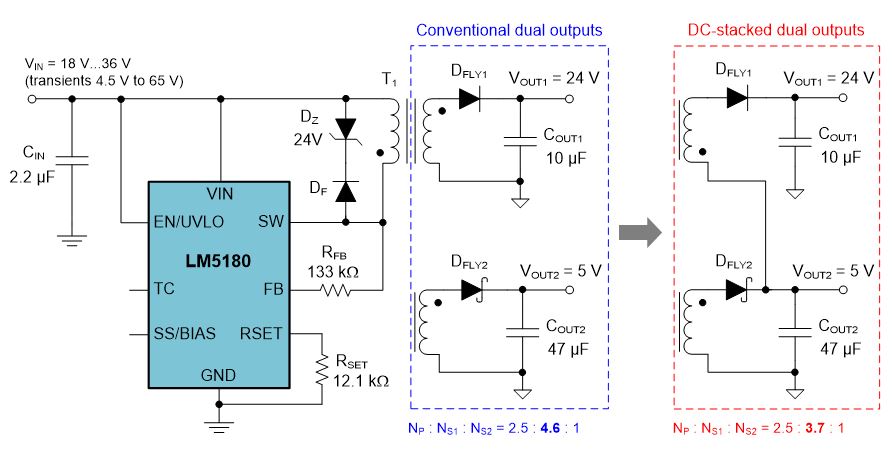Dear TIer,
after reading the article (How to raise regulation performance with a stacked-output PSR flyback DC/DC converter
) from Mr. Timothy Hegarty , I have successfully implemented better regulation performance of VISO = 24 and 5V at LM5180 as shown below.
My question is "Is it possible to use DC-stack topology to implement positive VISO and negative VISO such as VISO = 24 and -5V at LM5180? "
Best Regards,
Steve


